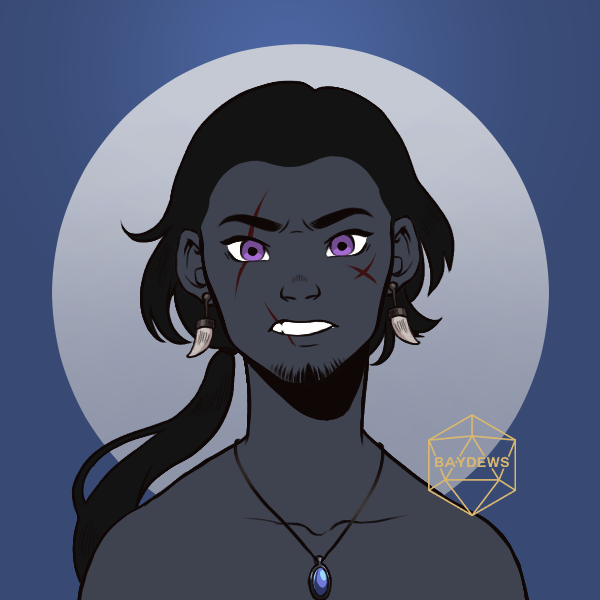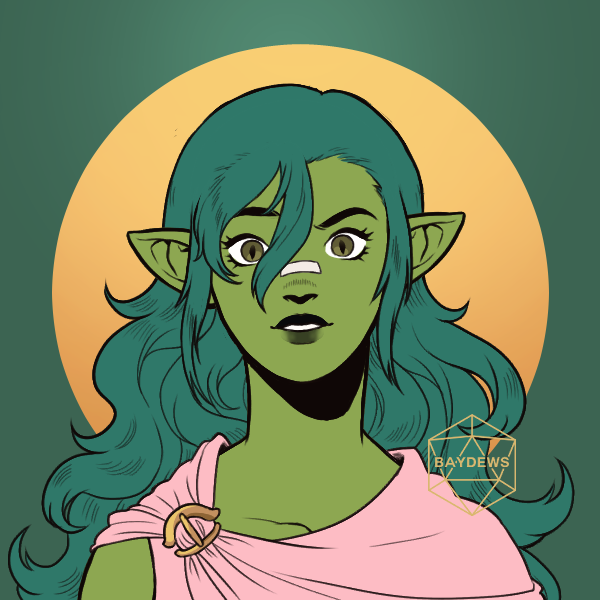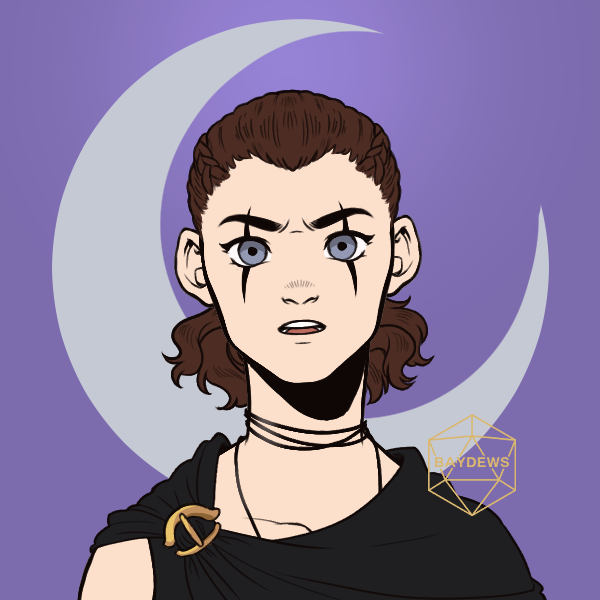This fanfiction (I suppose it counts as a fanfiction) is a mashup of two TTRPGs: Ironsworn, created by Shawn Tomkin, and the Planegea setting—created by David Somerville—for Dungeons & Dragons 5e, which is owned by Wizards of the Coast, which is in turned owned by Hasbro. Basically, I am taking my player characters and writing a story about their adventures as they move through the paleofantasy game world. And, since I am playing solo, I am a fandom of a single person.
Now, here's the important thing: Ironsworn was created with solo and cooperative play in mind, while D&D 5e is meant to be played solely in guided mode
with a Game Master (aka a Dungeon Master) leading the players and organizing the action and NPCs behind the scenes. What I am doing here is taking the Planegea setting for D&D 5e and superimposing the rules of Ironsworn overtop it. Will this work out? I'm not sure; everything I write in this space is an experiment. That said, I do think that TTRPGs are wonderful tools for prompting oneself to create fiction, and at least in that sense I think the experiment has so far been successful. However, I have yet to see myself bringing out the best of both systems as I slap them together in these solo sessions.
You can find a link to check out the first installment in this solo Planegea/Ironsworn story game, In the Lair of the Night Thing, at the end of this page. But for now, let's get into the PCs that I'll be using and writing about.
I actually don't know much about these characters. They were created based on archetypes: Khelarr is a big, strong, honorable warrior, Shotavi is a naive but kindhearted archer, and Iona is a shady, standoffish mage. I'll learn more about them as I continue writing their story, but for now they're largely unknown beyond the basic facts. Nonetheless, I used Baydews' Avatar Maker V2 to create bust portraits of each of them.

| Shadow +1 | Wits +1 | Heart +2 | Edge +2 | Iron +3 |
Khelarr, as an Ironsworn character, has three starting assets that will occasionally help out with his rolls: he is a duelist, meaning that he fights with a bladed weapon in each hand; he is a loyalist, meaning that he sticks close to his friends; and finally, he is spirit-bound, meaning that he inadvertently caused someone's death (in this case, his sister's), and the ghost of the slain person occasionally whispers insight and/or madness to him.
Khelarr is a goliath, which in D&D terms means he is very big and strong. (The picrew image does not do his shoulders justice). However, one thing I like about Ironsworn is that it doesn't use the genetic essentialism that D&D has always relied upon—in other words, a character in Ironsworn isn't smarter, stronger, faster, or anything else just because
they belong to a particular race; there are no race-based stat bonuses. So, Khelarr being a goliath is more for flavor and roleplay potential than anything else.
His background vow (read: the quest that drove him to start adventuring) is to find a way to put his sister's spirit to rest and atone for her accidental murder. Only when that is done can he return to his family with his head held high.

| Shadow +1 | Iron +1 | Heart +2 | Wits +2 | Edge +3 |
Shotavi is a dreas, a treant who became enamored with mortal life (in Shotavi's case, she grew fond of and curious about the mortal children who played in her branches) and chose to abandon the forest to walk among mortals. She is still half-plant, and doesn't understand the nuances of bipedal etiquette in Planegea.
Her assets are thus: she is an archer, and wields a bow gifted to her by the forest she left behind; she is a wildblood, and knows woodcraft and the ways of survival better than most; and finally she is an herbalist who likes to use her knowledge of her botanical brethren for healing.

| Iron +1 | Heart +1 | Edge +2 | Shadow +2 | Wits +3 |
Iona is a human woman. Technically, she is a spellskin,
the Planegea equivalent to a wizard in regular D&D, but this is difficult to play because Ironsworn is a low fantasy system (as opposed to any edition of D&D, which is very much high fantasy) and doesn't accommodate combat magic. I'll go into detail about my jury-rigged fix for this dilemma later. For now, let's talk about Iona's assets:
Her most prominent asset is her familiar, Chitter, who is a giant spider that is able to spy for her and learn secrets. Not many people like Chitter, understandably. Iona's other assets are the long-arm asset, meaning that she fights with a staff, and the augur asset, meaning that she knows a spell that can help her scry via summoning a murder of magical crows to caw their wisdom to her. Iona is very standoffish and aloof, but isn't strong enough to survive on her own without help—an attitude that has caused many a headache for Khelarr and Shotavi.
Chitter is loosely based on a scaled-up version of an American variety of wolf spider, specifically Gladicosa gulosa. (You can look up a picture yourself if you're curious; I'm not putting any more spider imagery on this website than I absolutely have to). I picked the species primarily because I have seen some up close and far too personally. If you want to learn more about the spider anatomy I reference in the story, such as what the heck chelicerae and cephalothoraxes are, this webpage from the University of Kentucky's Department of Entomology is a good source.
If you want some starter information information straight from the source about Planegea, then you can check out the first look at the PDF of the sourcebook which is 100% free to download and examine. To not be redundant, I won't repeat much from that document, but will instead examine what about the world of Planegea and the D&D rule system does and does not mesh well with the Ironsworn system and intended world.
This is the big one. In D&D, spellcasting classes have access to a huge variety and number of spells, and sufficiently high-level casters can have literally dozens of spells and cantrips at their fingertips. By contrast, in Ironsworn, there are 17 total magical processes (referred to as rituals) and each of them requires 1 whole asset slot—for reference, a character can have only three starting assets, and gaining enough experiece to be able to unlock a 4th slot takes a long time. Ironsworn is using this mechanical process to tell us that magic, though potent, is rare.
I didn't want to just shoehorn in spells from D&D. I decided to go with spellcasting characters deciding their intention in accordance with a spell from D&D (for instance, Detect Magic), and then making a 50/50 Ask the Oracle
dice roll to see whether or not it succeeds. So far, this works well enough for non-combat magic, but I'll probably encounter more and bigger problems when I start trying to figure out the mechanics of Iona casting Fireball or Magic Missile.